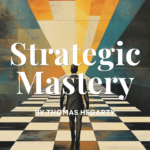
The Art of Storytelling in Business: Crafting Narratives that Resonate

The Art of Storytelling in Business: Crafting Narratives that Resonate
In the fast-paced world of business, where competition is fierce and consumer attention spans are fleeting, companies must find innovative ways to stand out. One powerful tool that has emerged as essential in this landscape is storytelling. The art of storytelling in business transcends mere marketing; it’s about creating narratives that resonate with your audience, foster emotional connections, and enhance your brand’s message.
Why Storytelling Matters in Business
Storytelling is not just a buzzword; it’s a vital component of effective branding. In a world inundated with advertisements and messages, stories have the unique ability to capture attention and evoke emotions. According to research, people are more likely to remember information when it’s presented in a story format rather than as plain facts. This cognitive phenomenon is what makes storytelling a powerful tool for customer engagement.
When customers connect with a brand on an emotional level, they are more likely to become loyal advocates. They don’t just purchase products; they buy into the story behind the brand. This emotional bond can lead to increased customer loyalty and advocacy, as satisfied customers are often eager to share their positive experiences with others.
Crafting Your Brand Narrative
Creating a compelling brand narrative begins with identifying your core values and mission. What is the essence of your brand? What do you stand for? Answering these questions will lay the groundwork for your storytelling efforts.
1. Know Your Audience
The first step in crafting a narrative is understanding who your audience is. Conduct thorough research to identify their needs, pain points, and aspirations. This insight will allow you to tailor your story to resonate with them on a deeper level.
2. Define Your Brand’s Unique Selling Proposition (USP)
Your USP is what sets you apart from competitors. It’s the unique angle that makes your brand special. Integrate your USP into your narrative to highlight what makes your offerings unique and valuable. This is where your storytelling can shine and differentiate your brand in a crowded market.
3. Create a Relatable Character
Every great story has a relatable character, and in business storytelling, that character can be your brand or even your customer. By introducing a character that represents your target audience or embodies your brand values, you create a connection that makes your story more engaging and relatable.
4. Build a Compelling Conflict
Conflict is the essence of any story. In a business context, this could be the challenges your customers face that your product or service aims to solve. By highlighting these conflicts, you create a narrative arc that keeps your audience engaged. They will want to see how the character (your brand or customer) overcomes these challenges.
5. Provide Resolution
After presenting the conflict, it’s essential to showcase the resolution. This is where you demonstrate how your brand or product solves the customer’s problem. Your audience should feel like they’ve followed a journey and reached a satisfying conclusion that leaves them eager to engage further with your brand.
Utilizing Different Mediums for Storytelling
Once you have crafted your story, it’s time to think about how to deliver it. Different mediums can enhance your storytelling efforts, and each has its unique advantages.
1. Written Content
Blog posts, articles, and storytelling on your website can provide depth and context to your narrative. Use engaging language and visuals to draw readers in and make your story memorable.
2. Video Storytelling
Video is an incredibly effective medium for storytelling. It allows you to convey emotions visually and audibly, making your narrative more impactful. Consider creating short films or customer testimonials that illustrate your brand’s story.
3. Social Media
Social media platforms are ideal for sharing bite-sized stories that resonate with your audience. Use images, short videos, and captions to tell your brand story in an engaging way. Platforms like Instagram and TikTok are particularly effective for visual storytelling.
4. Podcasts
Podcasts offer a unique opportunity to share in-depth stories and insights. By discussing your brand’s journey or interviewing customers, you can engage your audience in a personal and relatable manner.
Real-World Examples of Effective Storytelling
Many successful brands have leveraged storytelling to create lasting connections with their customers. Here are a few notable examples:
1. Nike
Nike is a master at storytelling. Their campaigns often focus on personal journeys, resilience, and the pursuit of greatness. By sharing the stories of athletes overcoming adversity, they inspire their audience and reinforce their brand message of empowerment.
2. Apple
Apple’s storytelling revolves around innovation and creativity. Their marketing campaigns often tell the story of how their products enhance the lives of users, focusing on the emotional connection that comes from using their technology.
3. Dove
Dove’s ‘Real Beauty’ campaign is a powerful example of using storytelling to challenge societal norms. By showcasing real women and their stories, Dove fosters an emotional connection with its audience, enhancing brand loyalty and engagement.
Measuring the Impact of Storytelling on Your Brand
To understand the effectiveness of your storytelling efforts, it’s crucial to measure their impact. Here are a few metrics to consider:
1. Engagement Rates
Monitor how your audience interacts with your content. High engagement rates indicate that your storytelling resonates with customers and encourages them to take action.
2. Conversion Rates
Track how storytelling influences conversion rates. If your narrative effectively communicates your brand message and resonates with your audience, you should see an increase in sales or sign-ups.
3. Customer Feedback
Solicit feedback from your audience to gauge their emotional response to your storytelling. This can provide valuable insights into what works and what needs improvement.
Conclusion: The Future of Storytelling in Business
As businesses continue to navigate an increasingly complex landscape, storytelling will remain a vital tool for fostering connections and driving engagement. By crafting narratives that resonate with your audience and authentically represent your brand, you can cultivate loyalty and advocacy that stands the test of time.
Incorporating storytelling into your branding strategy isn’t just an option—it’s a necessity in today’s market. Embrace the art of storytelling and watch as your brand transforms from a mere business into a beloved narrative that customers are eager to be a part of.












Recent Comments